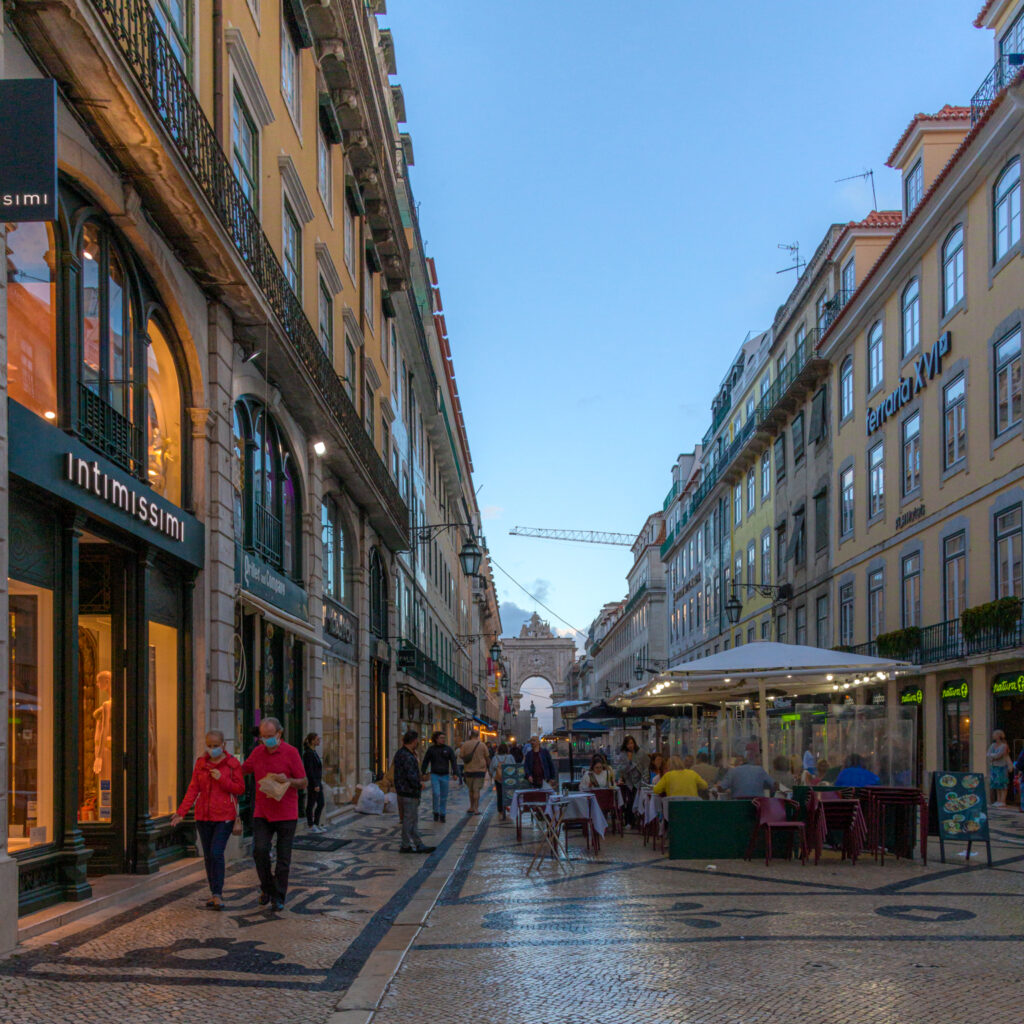Today we headed to Lisbon for one more night before we fly back to the United States tomorrow afternoon.
The house in Coimbra
We were leaving at 10am, so Pam had time to sit in our private garden. Even though the house didn’t have the most convenient layout — it was too awkward to take our heavy suitcases up the spiral stair for only two nights, it had memorable decor and lots of character. It felt like an authentic Portugal place. Shutters for heat management, floor plan to accommodate the steep hill, old, old trees in the garden… renovated for comfort, but the renovations didn’t take away the character.

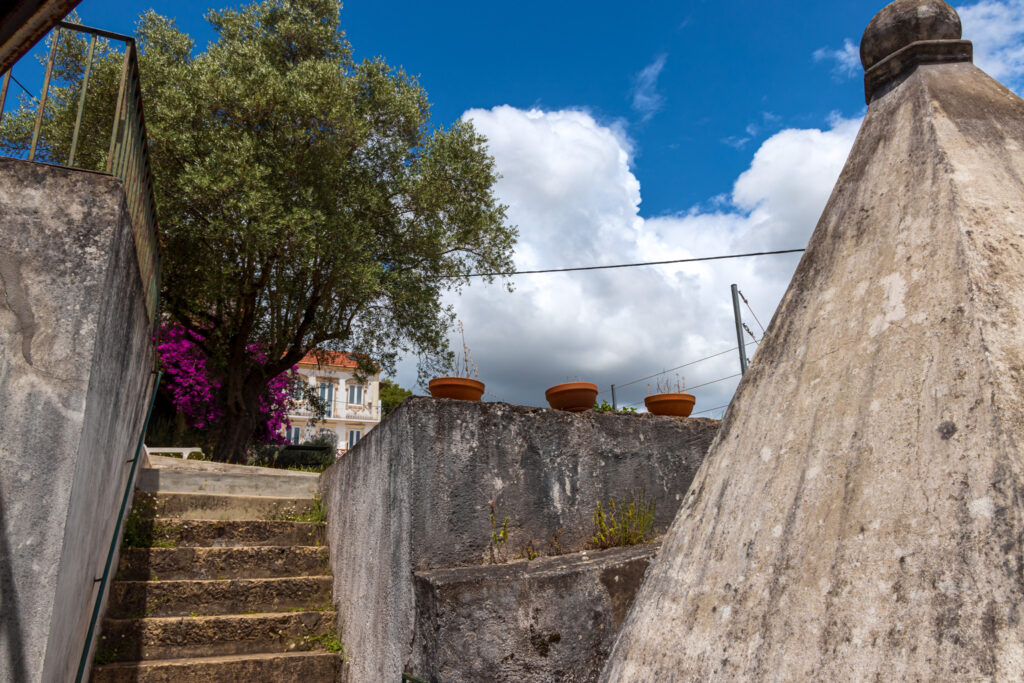
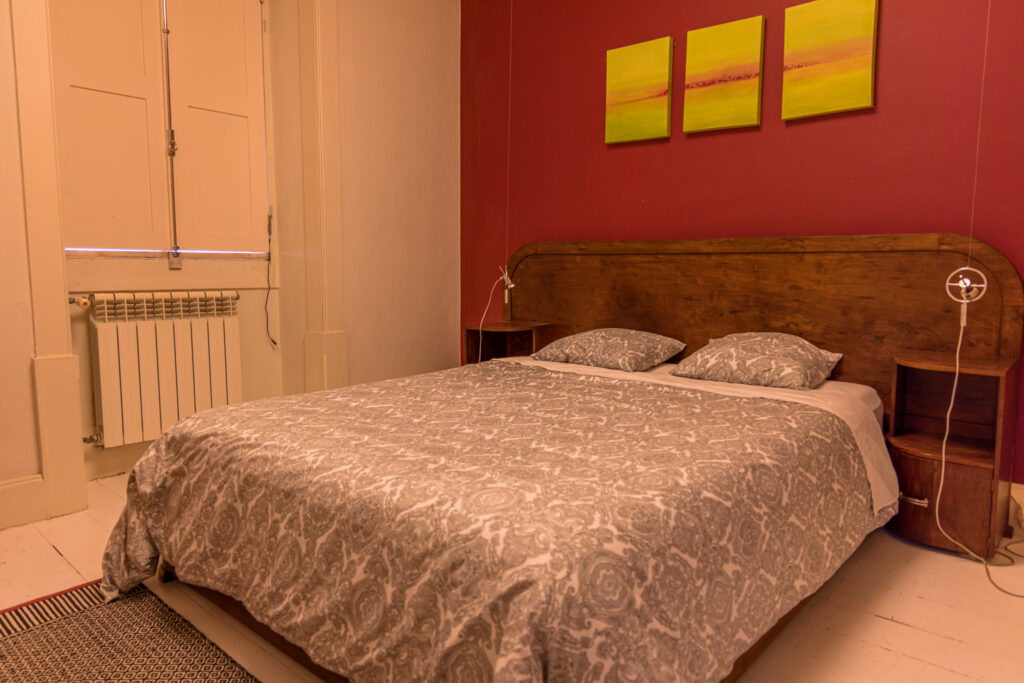
At 10am, we got an Uber to Coimbra-B train station. Before we left, there were utility trucks on our narrow street putting up festival lights. Which festival was up next? There are lots of festivals in Portugal! Pam worried that the Uber would be blocked and we would be late, but it was fine. With our bags on the street outside the gate, an elderly lady spoke to us as she walked by, heading downhill. She spoke only Portuguese, but I figured out that she was wondering why we were leaving before the festival. I told her we had to fly home. She was happy to hear that we had enjoyed staying in Coimbra. I was happy to be able to communicate, even though it had to be a simple conversation.
Arriving back in Lisboa
I want to write the city name the way the locals do, but I keep switching back and forth since I’m writing in English. Why do we use different names for places than the locals? Lisboa is not hard to pronounce, but maybe once upon a time, it was more nasal, like many Portuguese words, giving it the “n” in English.
We arrived at Dream Chiado, an apartment-hotel of about 10 rooms. It had a miniature kitchen with just what we needed for beverages and peanut butter on toast, a very comfortable bedroom, and wonderful windows that could open like doors or tip open to let in the breeze. You could step out on the ledge, protected by a railing, and check out the air and street action. The only seating was a café table in the kitchen area, but it allowed us to use our computer and write our travel notes.
Chiado
Chiado is a trendy neighborhood and for lunch we discovered a fantastic vegan restaurant called Organi Chiado right around the corner. They served the best roasted tofu — Pam wanted their recipe and told them they needed to write a cookbook. Her plate had a couple of salads, sweet potato puree, and basmati rice. David had a veggie burger made of beans that was also very good.
We took advantage of our comfortable room for more rest time. Then we headed out to take the famous #28E eléctrico (tram) to Miradouro de Portas do Sol in the old neighborhood of Alfama. The viewpoint was dramatic and busy with tourists, cafés, and a swarm of tuk tuks to help you with your sightseeing. (The tuk tuks brought back memories of India!) These three-wheeled vehicles have seating for 2 to 4 behind the driver, usually with a sunshade roof.

Alfama
Alfama is an old neighborhood that wasn’t destroyed in the earthquake of 1755. The twisty, steep, narrow streets are a challenge to walk, and an even bigger challenge for the full-size busses that manage to make the tight turns. Bus drivers in Lisboa have to be skilled!

From the Miradouro, we followed signs for Castelo São Jorge, a medieval fort at the top of Lisboa’s highest hill. It was windy up there with a cooling breeze, with overlooks of the city, the Tejo River (Tagus in English) and the Atlantic. You could climb the castle walls and visit with the resident peacocks that had growing chicks.
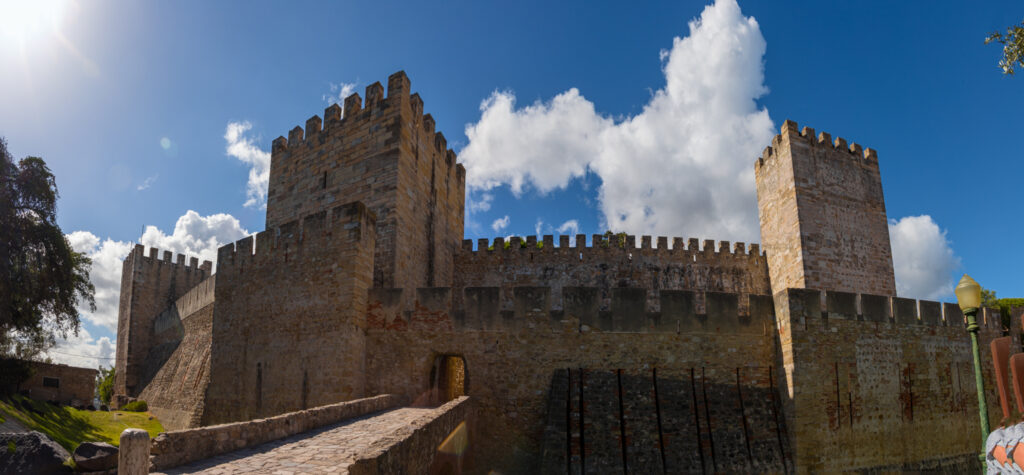
As we walked back down, David was excited about the public, free elevators we discovered. We took them from our upper tier on the cliff-like hillside, down five stories to another level. In another block, we found another elevator to take us down yet another level. Going down was convenient, but the excitement was for when you wanted to go up.
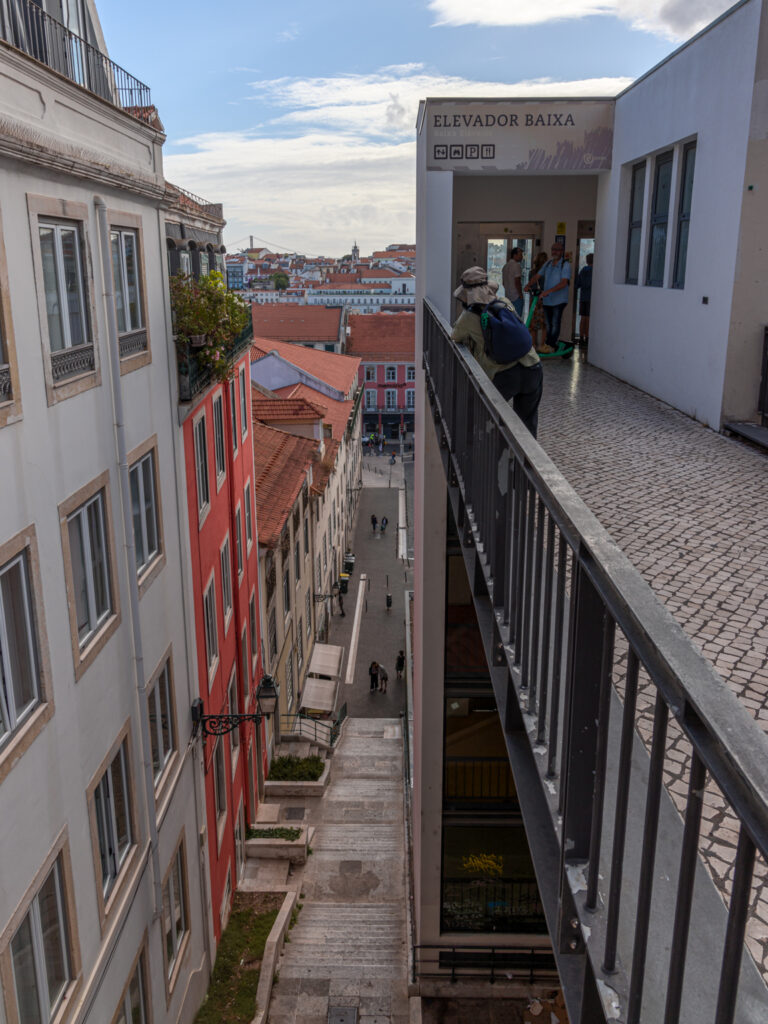
We made our way to Praça do Comércio before dinner and enjoyed the breeze by the river.
